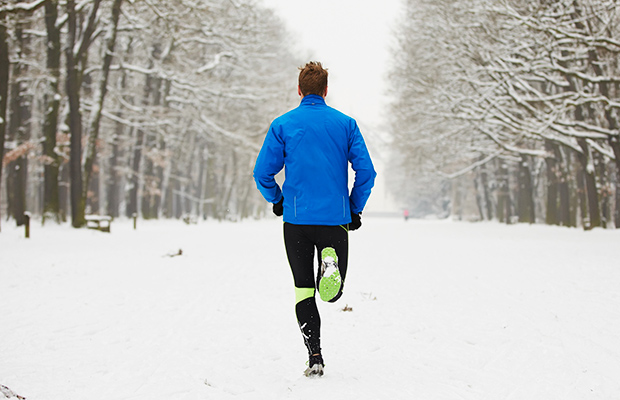by Kelly R. Smith

|
From Dictionary.com, “A prepper is someone who actively prepares (preps) for worst-case scenarios, such as the end of the world, by practicing survivalist techniques, including hoarding food.”1 Some would say preppers are living on the fringe, but perhaps the idea isn’t so crazy. Witness the Anifa and BLB antics during the past year. Witness all the left-leaning municipalities de-funding police. But it gets even more mundane; remember when COVID-19 hit? Forget finding toilet paper on store shelves. I had a substantial stock in our walk-in pantry. And, plenty of Spam and tuna fish. Crazy like a fox.
So let’s look at 8 prepper tips for beginning survivalists. They don’t all have to be done right away or in any particular order. It really is a lifestyle shift and just like a fitness program, it’s practical to approach it incrementally.
- Keep your physical fitness level up. When SHTF you’re going to have to be prepared to do everything yourself or with limited help. Many tasks will be strenuous. If you’ve got to bug out, your backpack may weigh up to 50lbs or more just stocked with the bare necessities.
- Formulate a variety of plans. Plan for any of the major scenarios that are likely to occur: these include, but are not limited to natural disaster (hurricane, fire, earthquake), government collapse or martial law, and disease outbreak (think COVID-19). Each of these situations would require a slightly different plan of action, modified to reflect what will be lost/needed if that specific event comes to pass.
- Involve your household. Don’t make the mistake of expecting that one family member can do the prep work of the entire family unit all by themselves. This would put a major strain on you, but it also leaves your family at a at a loss if something were to happen to you. Everyone in the household should be able to fend for themselves as well as playing their designated role as a team member. This means the burden of survival will be somewhat evenly distributed among everyone. A reasonable starting point is by making sure that everyone is familiar of the family plans in the case of an emergency.
- Stay out of debt. OK, we live in the real world so some debt is unavoidable. Look how fast the federal government curtailed currency production when the pandemic started. Many would-be preppers jump in with both feet and try to stock up right from the get-go. Spread out your purchases on a prioritized basis. Avoid the temptation. Food? Throw a few long-shelf life items into your basket every time you grocery shop. Actively begin to get out of debt. Dave Ramsey has some good advice. For example, “Break up with your barista. If you don’t know where all your money’s going each month, we’re pretty sure your favorite coffee shop can find it for you. Brewing your own coffee at home is a simple way to save money fast.”2 I started doing this a long time ago. I picked up a coffee grinder and order my espresso coffee beans from Black Rifle Coffee. Head and shoulders above Starbucks in quality. Start putting back some physical cash somewhere in your home on a regular basis. Precious metals make good bartering mediums after a crisis.
- Surround yourself with like-minded preppers and homesteaders. Cooperation will expand your group of resources, which can mean the difference between survival and failure if you’re all left to your own devices. Your own neighbors are your best bet for pooling resources and bartering. In fact, you can allocate responsibility for particular things to different people. One neighbor might be an avid vegetable gardener, another may be adept at ammo reloading. Which one has the MacGyver gene and a garage shop full of tools?
- Arm yourself. This point is hard to over-state. When disaster strikes and local first-responders are overwhelmed, nobody cares about your 911 call. As a matter of fact, if you live in a place like Seattle, Minneapolis, or Austin, your elected officials are going to tell the police to stand down and green-light the radical mobs. The mobs will come for your stuff. The three most recommended items are a handgun, a rifle with a scope, and an assortment of knives. A stun gun or two never hurts. And ammo; plenty of ammo.
- Keep things in perspective. Being prepared is important but don’t get overwhelmed. Start with the essentials and take it from there. Focus on defense, food, water, shelter, and medical supplies.
- Get a dog if you don’t already have one. Rescue dogs are always a good choice. Shelters are always looking to unload them and chances are good that Fido will already be housebroken. If the bad guys have to choose between attacking a home with a big bark and one with no bark, it’s kind of a no-brainer which way they’ll go.
So, there it is. These 8 prepper tips for beginning survivalists are in no way an exhaustive list but they will certainly give you food for thought. Take your time, educate yourself, and be safe out there.
Related Content
- Antifa, Obama’s Shadow Government, Resistance Against Trump
- Why Pandemics Like COVID-19, or Coronavirus Persist
- Build a Walk-In Pantry for More Kitchen Storage Space
- Do UV Light Sanitizers Kill COVID-19?
- Companion Planting Guide for Your Veggie Garden
References
- Dictionary.com, https://www.dictionary.com/e/slang/prepper/?itm_source=parsely-api
- Dave Ramsey, Ramsey, 25 Ways to Get Out of Debt in 2020, https://www.daveramsey.com/blog/ways-to-get-out-of-debt
Looking for more great content? Visit our main site I Can Fix Up My Home or our partner sites:
I offer article and blog-writing services. Interested? Contact me for a quote!
Did you find this article helpful? Millions of readers rely on information on this blog and our main site to stay informed and find meaningful solutions. Please chip in as little as $3 to keep this site free for all.
About the Author:
 Kelly R. Smith is an Air Force veteran and was a commercial carpenter for 20 years before returning to night school at the University of Houston where he earned a Bachelor’s Degree in Computer Science. After working at NASA for a few years, he went on to develop software for the transportation, financial, and energy-trading industries. He has been writing, in one capacity or another, since he could hold a pencil. As a freelance writer now, he specializes in producing articles and blog content for a variety of clients. His personal blog is at I Can Fix Up My Home Blog where he muses on many different topics.
Kelly R. Smith is an Air Force veteran and was a commercial carpenter for 20 years before returning to night school at the University of Houston where he earned a Bachelor’s Degree in Computer Science. After working at NASA for a few years, he went on to develop software for the transportation, financial, and energy-trading industries. He has been writing, in one capacity or another, since he could hold a pencil. As a freelance writer now, he specializes in producing articles and blog content for a variety of clients. His personal blog is at I Can Fix Up My Home Blog where he muses on many different topics.





